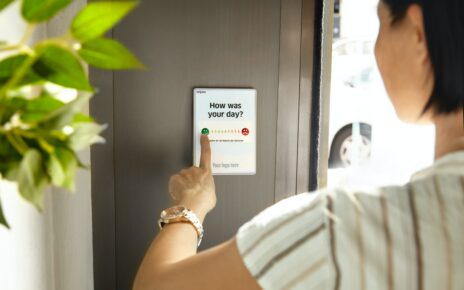Engaging and effectively communicating with non-desk and frontline workers is vital for the success of many industries. This FAQ addresses common questions and concerns about communication practices and measurement strategies for these essential segments of the workforce.
Q1: Who are non-desk and frontline workers?
A1: Non-desk and frontline workers are employees who do not work from a traditional office setting. They include roles in retail, hospitality, healthcare, manufacturing, and more. According to the Deskless Workforce Report 2023 by Axonify, they make up approximately 80% of the global workforce. Additionally, Gallup’s State of the Global Workplace 2023 highlights that these workers are essential in industries where direct customer interaction and hands-on tasks are critical.
Q2: Why is communication with frontline workers challenging?
A2: Several factors contribute to the communication challenges faced by frontline workers:
- Irrelevant and Ineffective Communication: Many workers find communications from headquarters irrelevant. The 2023 Deskless Report found that more than one-third of frontline workers feel disconnected from HQ communications.
- Lack of Accessible Channels: Many frontline workers lack access to traditional communication channels like email. Pew Research indicates that a quarter of adults with household incomes below USD30,000 don’t own a smartphone .
- Fractured Communication: Information often comes from multiple sources, leading to inconsistencies and miscommunication.
Q3: What is the impact of poor communication on frontline workers?
A3: Poor communication can lead to several negative outcomes:
- Low Engagement and Morale: Frontline workers may feel undervalued and less motivated.
- Increased Turnover: Dissatisfied employees are more likely to leave, leading to higher recruitment and training costs.
- Decreased Productivity: Miscommunication can result in inefficiencies and errors, impacting overall productivity.
Q4: What are some effective communication strategies for frontline workers?
A4: To effectively engage frontline workers, consider the following strategies:
- Utilize Mobile-Friendly Platforms: Leverage apps and SMS to provide real-time updates and feedback mechanisms.
- Create Relevant Content: Ensure that communications are directly relevant to the roles and responsibilities of frontline workers.
- Encourage Two-Way Communication: Establish channels for feedback and ideas, such as regular surveys and suggestion boxes.
- Localize Communications: Tailor messages to specific locations and contexts, considering local culture and languages.
- Involve Leaders and Managers: Train frontline managers to relay messages effectively and act on feedback.
Q5: Why is measuring communication effectiveness important?
A5: Measuring communication effectiveness helps organizations:
- Understand Engagement Levels: Assess how engaged frontline workers are with the content they receive.
- Tailor Communication Strategies: Modify strategies based on feedback to better meet workers’ needs.
- Drive Continuous Improvement: Regular measurement and analysis enable continuous improvement of communication strategies.
Q6: What metrics can be used to measure communication effectiveness?
A6: Organizations can use various metrics to measure communication effectiveness, including:
- Engagement Surveys: Regular surveys to gauge employee engagement and satisfaction .
- Feedback Mechanisms: Implement suggestion boxes and interactive platforms for real-time feedback .
- Communication Reach: Measure the extent to which communications reach frontline workers .
- Content Relevance: Assess how relevant and useful the communicated information is to the workers’ roles.
- Technology Utilization: Track the usage and effectiveness of communication tools and platforms.
Q7: What are some common pitfalls in communicating with frontline workers?
A7: Common pitfalls include:
- Ineffective Communication Channels: Relying on email or intranet systems that are not accessible to all frontline workers.
- Lack of Personalization: Sending generic messages that do not address the specific needs and contexts of different worker groups.
- Ignoring Feedback: Failing to act on feedback from frontline workers can lead to disengagement and distrust.
- Overwhelming Managers: Frontline managers are often overburdened and stressed. Providing them with adequate training and support is crucial for effective communication.
Q8: How can organizations support frontline managers in communication?
A8: To support frontline managers:
- Provide Training: Offer training programs on effective communication and feedback management .
- Supply Tools: Ensure managers have access to the right digital tools and platforms.
- Encourage Work-Life Balance: Help managers manage their workload to prevent burnout.
- Promote a Feedback Culture: Encourage managers to create an environment where feedback is welcomed and acted upon.
Q9: What are the benefits of engaging frontline workers effectively?
A9: Engaging frontline workers effectively can lead to numerous benefits:
- Enhanced Customer Experience: Engaged employees deliver better customer service, boosting satisfaction and loyalty.
- Increased Productivity: Valued and informed workers are more motivated and productive.
- Reduced Turnover: Engaged employees are less likely to leave, reducing recruitment and training costs.
- Stronger Organizational Culture: Effective communication fosters a sense of belonging and trust within the workforce.
Q10: What role does technology play in frontline worker communication?
A10: Technology plays a critical role in frontline worker communication by:
- Enabling Real-Time Updates: Mobile apps and SMS can provide timely information and updates.
- Facilitating Feedback: Digital platforms allow for easy collection and analysis of worker feedback.
- Improving Access: Mobile-friendly tools ensure that workers can access communications regardless of their location.
- Enhancing Engagement: Interactive platforms can make communication more engaging and relevant to workers.
Q11: How do companies currently engage with frontline workers?
A11: Companies currently engage with frontline workers through a variety of methods:
- Mobile Applications: Many organizations use mobile apps to deliver real-time updates and facilitate communication.
- SMS/Text Messaging: Text messaging is a common method for reaching workers who may not have access to email.
- Digital Signage: In industries like manufacturing and retail, digital signage is used to communicate important information.
- Employee Portals: Some companies have developed employee portals accessible via smartphones to provide resources and updates.
Q12: What are the most frequently used channels or mediums of communication?
A12: The most frequently used channels or mediums of communication for frontline workers include:
- Mobile Apps: Used for push notifications, updates, and feedback collection.
- SMS/Text Messaging: Effective for quick, time-sensitive communication
- Digital Signage: Displaying important information in common areas
- Employee Portals: Providing access to company resources and updates
- Face-to-Face Meetings: Especially in smaller teams or shifts
Q13: What is the state of communication measurement and effectiveness with non-desk workers?
A13: The state of communication measurement and effectiveness with non-desk workers varies across industries, but there are some common trends:
- Engagement Metrics: Regular surveys and feedback mechanisms are used to measure engagement.
- Reach and Utilization: Companies track how many workers are accessing communications via mobile apps and other platforms.
- Content Relevance: Assessing whether the information provided is useful and applicable to the workers’ roles
- Real-Time Feedback: Many organizations are adopting real-time feedback tools to continuously improve communication strategies.
References
- Axonify Deskless Report 2023: https://axonify.com/en-uk/resources/deskless-report-2023/
- Deskless Workforce: http://desklessworkforce2018.com/
- Gallup State of the Global Workplace study 2023: https://www.gallup.com/workplace/349484/state-of-the-global-workplace.aspx
- Deskless Report 2023: https://www.desklessreport.com/
- Qualtrics Employee Experience Trends: https://www.qualtrics.com/blog/employee-experience-trends/
- SafetyCulture Feedback from the Field: https://blog.safetyculture.com/industry-trends/feedback-from-the-field-communications-need-to-catch-up-to-the-reality-of-frontline-work
- Pew Research on Smartphone Ownership: https://www.pewresearch.org/internet/fact-sheet/mobile/
- Deloitte Global’s Quantified Organization research: https://www.deloitte.com/global/en/issues/work/quantified-organization.html
- Meta study – Deskless not Voiceless: https://en-gb.workplace.com/deskless-not-voiceless-2021



